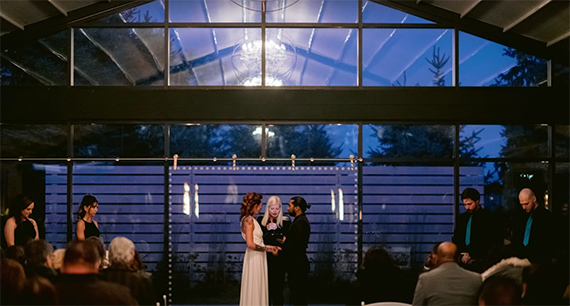Believe it or not, even seasoned photographers get nervous about certain gigs. Taylor Jackson is no exception. Though he’s booked hundreds of weddings and shot assignments around the world, when a client contacted to photograph their nighttime wedding, he was hesitant to accept.
But upon meeting up, he clicked with his client and accepted the gig. Though he knew it would be a challenge to accomplish, his years of experience helped him navigate the ceremony. Below, he goes over the behind the scenes details, revealing how he managed to overcome all of the obstacles that come with low light event photography.
Here’s a few take-aways we cherry picked from Taylor’s experience:
Manage your client’s expectations.
When working directly with clients, it’s important to thoroughly explain what you can and cannot do for them. Be sure that they understand that they won’t be able to get epic outdoor images for Instagram if the ceremony doesn’t end until 9pm.
If you’re not sure you can deliver what they want, don’t be afraid to turn down a gig. While it’s great to push your limits, it’s also important to feel capable of producing quality results.
Evaluate the light you have available.
Take a look around your venue ahead of time (if possible). Could you use the existing ambient light to expose your pictures? Or will you have to resort to speedlites to get the shots you need? In either scenario, you should be prepared.
For much of the ceremony shown here, Taylor sticks to using the light cast off by the surroundings. However, he keeps the flash attached to his camera body, so that it’s ready should he need it.
In some cases, the right gear can make all the difference.
Having the latest and greatest technology isn’t all there is to being a photographer. However, being equipped with the right equipment to complete the task at hand is a must.
In this case, Taylor’s ability to shoot at ISO 5,000 is essential to making these pictures work. Be sure that, if you do decide to take on a low-light event, you have the right tools to take on the job.
When you’re in a difficult situation, slow down.
If you’re feeling a little stressed or under-confident, try not to freak out. Instead, slow down and focus on getting the most important moments. Taking the extra time to do a good job is always better than rushing through and missing something major.
In low light, watch your autofocus.
Most of us are used to simply flicking on an autofocus switch and letting our lenses do the work when working events. However, your camera can’t work as quickly as it usually does when there isn’t much light to work with.
Luckily, you can lock onto a focus point when working with relatively stationary scenes. For moving subjects, try keeping an even distance by moving in time with them. This way, each frame will have approximately the same level of sharpness.
Sometimes, your best bet is to break the rules.
When you’re working in a tricky scenario, sometimes you have no choice but to improvise.
In this case, Taylor’s faced with a series of glass windows reflecting a nearby chandelier. In most cases, one would do everything possible to remove the reflections. However, here, the reflections add some depth to an otherwise black background. By embracing a “flaw”, Taylor was actually able to pull off a more successful image!
Like This Article?
Don't Miss The Next One!
Join over 100,000 photographers of all experience levels who receive our free photography tips and articles to stay current:







Leave a Reply